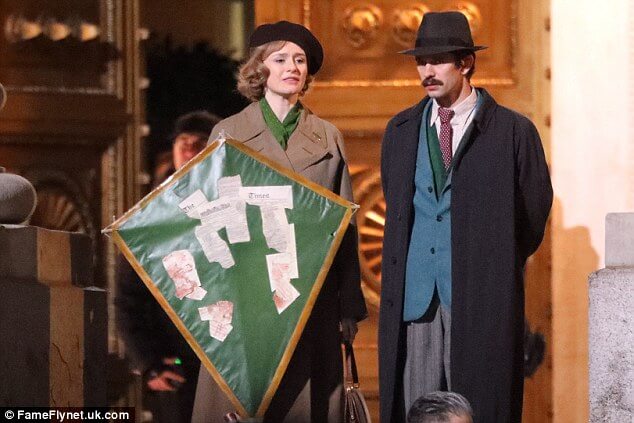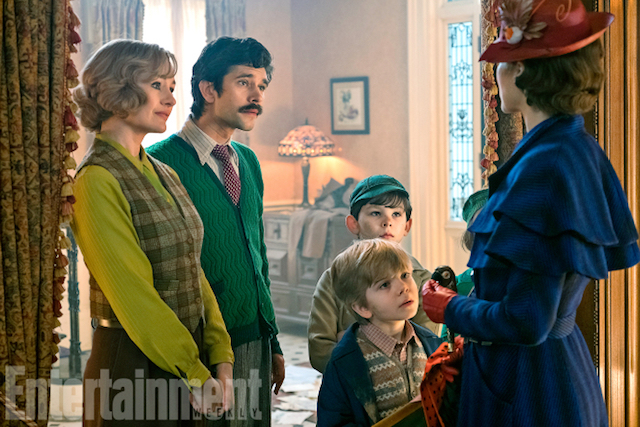The Mary Poppins Official Trailer Touched A Nerve
I have to admit, Disney, you got me. You got me good. I haven’t cried at a movie trailer, ever. At least, not that I remember. I have some stern opinions regarding Christopher Robin, since C.R. Milne was a real person. And I am a bit cynical about how Disney sequels and reboots seemed to aim at recycling our nostalgia.
Then you premiered the second trailer for Mary Poppins Returns. We had already known that this movie would be dark, set in the Great Depression and leaving Michael a widower. We already knew that most of the cast had sadly passed on, or was too old to resume their previous roles; Matthew Garber, the original Michael, died of hepatitis at 19, as one example. We haven’t forgotten you, Matthew, or the joy you and Karen Dotrice brought as Jane and Michael Banks. We certainly won’t forget David Tomlinson, RIP, as George Banks.

The trailer starts with Michael and Jane cleaning out their attic. Their parents, George and Winifred, have since passed, and Michael is facing financial woes after his wife dies and he hates his day job, but he needs it to support his three children. Jane is optimistic, trying to hold onto the sentimental items from their childhood. Michael points out that they haven’t played with their father’s kite in years, and tosses it. The wind starts blowing it, and Michael’s son Georgie starts playing with the kite. In time, he and Jack launch it into the sky, and Mary Poppins comes down.
I didn’t expect the attic scene to touch a nerve. But it reminded me of when my dad died. I don’t have many memories of that time, apart from the overwhelming grief, but I remember that my mom and siblings had to clean out my dad’s things. They had to decide what to keep, and what to toss. My dad loved film and cameras as a hobby, and he had dozens of slides from medical lectures. I was only ten at the time, so I didn’t remember if I had a say in what to keep or toss. My mom and siblings decided to dispose of an old projector camera that was broken, leaking fluid, and would only work by projecting the images onto canvas. If it had been up to me, I would have kept every item. Our family has also cleaned out a lot of books, toys, and clothes that only have sentimental value.

Seeing Michael admit that he’s a total mess also didn’t help. Michael is a single father who has three kids under his belt, and fears that his family is going to lose their home. Despite his sternness, it’s obvious that he loves his children and wants the best for them. It absolutely hurt to see a character trying his best out of love, and that love isn’t enough to provide for his family’s needs in the middle of grief and stress. When Mary Poppins returns, he and Jane marvel at how she just reappeared, not having aged a day, right when they need her. Jane sounds disbelieving, as if she’s been asking for Mary to appear, like a proverbial goddess that can settle domestic chaos, and provide the love that is missing.
In my previous column on Mary Poppins Returns, I mention how the movie seems to have been made for the adults these days who were promised a life of stability, success and happiness, and that reality and some rather dastardly people have pretty much made us scared all the time. In contrast, Mary Poppins was made for the children and grownups of the 1950s, who were achieving material success on the outside, but who on the inside were stifled by societal prejudices, and needed to break the mold to find the love.It certainly succeeded in reminding us of the joy in family, and the magic of a nanny that can make paintings come to life.

The question is, does Michael represent us? Jane could, but Jane has to be strong for her younger brother, and for the unions that she’s protecting. She wants to hold onto the past, because the past was an ideal that neither she nor Michael can regain. Mary Poppins came for three lovely days, where she took them on outings, taught them the value of laughter and finding joy in every nook and cranny, from the simple chalk drawings outside Hyde Park, to the London rooftops in the twilight. After that, she flew off and vanished, ordering the children to make up with their father.
Jane and Michael’s disbelief is understandable. Three days seems inconsequential in the span of two decades. They’ve both had to gain an education, grow up, and earn a living. In Michael’s case, he married a woman he loved, only to lose her to some unknown tragedy. Then his day job makes him miserable, while he wants to draw and make his children happy. Jane in the meantime remains an activist, but there’s only so much one woman can do in the midst of the Great Depression and the dozens of hungry families struggling for a living. It’s hard to fight for compassion, when most people are struggling to eat. World War II will only make things worse, when the war will kill six million people, and all the civilians can do is enlist, drive nurse cars, and write to get as many refugees out of the war zone as they can. Still, Jane seems optimistic, wanting to remember the good times while moving forward for a better future.

Who are we then, the audience? We are the adults who grew up on Disney as children, who wanted the magic to come to life. And yet our world is much scarier than what our parents and teachers led us to believe. There are complicated layers, stresses, news that we wish we didn’t have to know. We all try to find joys in various ways, while mourning that the world doesn’t have the magic that a nanny flying on an umbrella brought to 17 Cherry Tree Lane. Like Michael, we have our day-to-day stresses about the ones we live, while like Jane we try to fight for a better future.
I hope that Disney can live up to the promise they made, that Michael and Jane will accurately reflect who we are. It’s going to be a hard promise to keep, to a generation that wants better.

